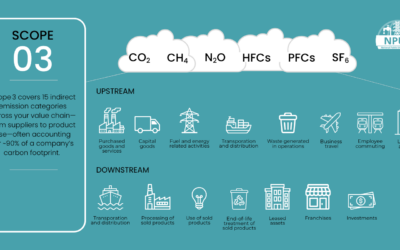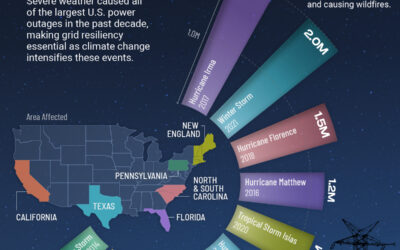Visualized: Clean Energy and Emissions Goals by State
In its Nationally Determined Contribution to the Paris Agreement, the U.S. set a target of reducing its greenhouse gas (GHG) emissions by 50-52% below 2005 levels by 2030, as well as achieving 100% carbon-free electricity by 2035.
To discover how each state is contributing to these goals, this graphic sponsored by the National Public Utilities Council provides an overview of each state’s ultimate clean energy or GHG emission reduction goal.
Varying Commitments
An analysis of the aggregated data by S&P Commodity Insights reveals a broad spectrum of clean energy and emission reduction goals in the United States.
While some states have more ambitious goals of attaining 100% clean energy by 2040, others, such as Ohio, have opted for more modest and short-term targets, aiming to achieve 8.5% renewable electricity by 2026.
Eleven states, or 22%, have never set clean energy or emission reduction goals. These states include Alabama, Florida, Georgia, Mississippi, Tennessee, and West Virginia.
Similarly, another ten states (20%) have expired goals with target dates as far back as 2015. These ten states, including the Dakotas, Missouri, Kansas, Montana, and Oklahoma, have not reset their goals since.
Shares of Clean Energy by State
To get a glimpse into how far each state has to go in achieving its goal, a snapshot of the use of clean electricity in each state is shown below.
Using data from the Nuclear Energy Insitute, the bars show each state’s 2021 share of emission-free electricity broken down by nuclear and various renewables.
While clean electricity made up 70% or more of the electricity mix in several states, nuclear and renewable energy sources comprised approximately 40% of total U.S. electricity generation in 2021.
To hit its 100% carbon-free electricity goal, therefore, the U.S. needs a minimum 4.3% annual increase in clean electricity generation through 2035. For context, an average annual growth of 2.4% was observed in the last five years.
On the GHG reduction side of things, emissions were 17% below 2005 levels in 2021, showing the need for an additional 35% reduction by 2030.
As these figures show, achieving the ambitious clean energy and emissions reduction goals in the U.S. will require a significant ramp-up of clean electricity generation in the upcoming years, along with accelerated decarbonization efforts across all sectors.





